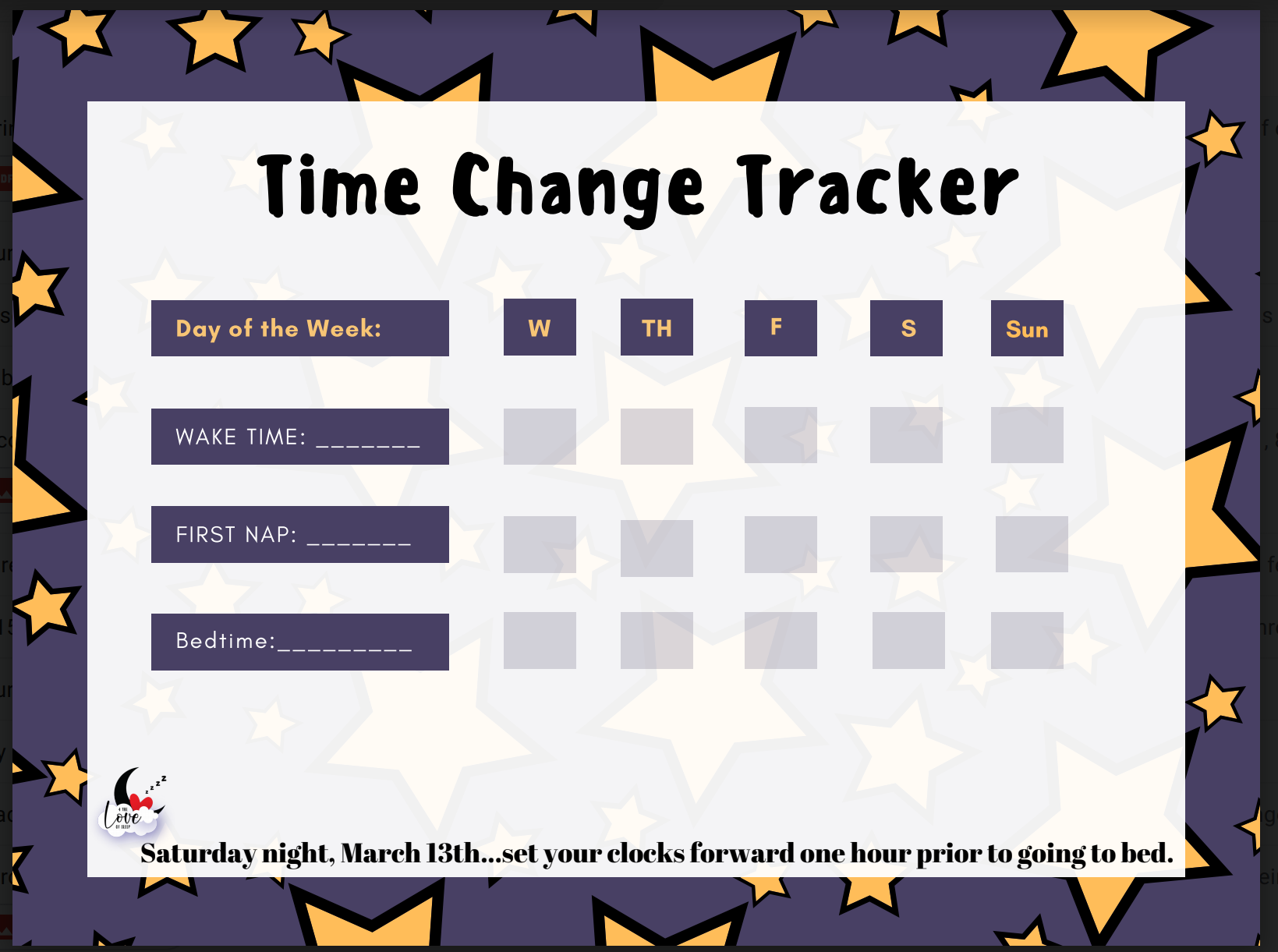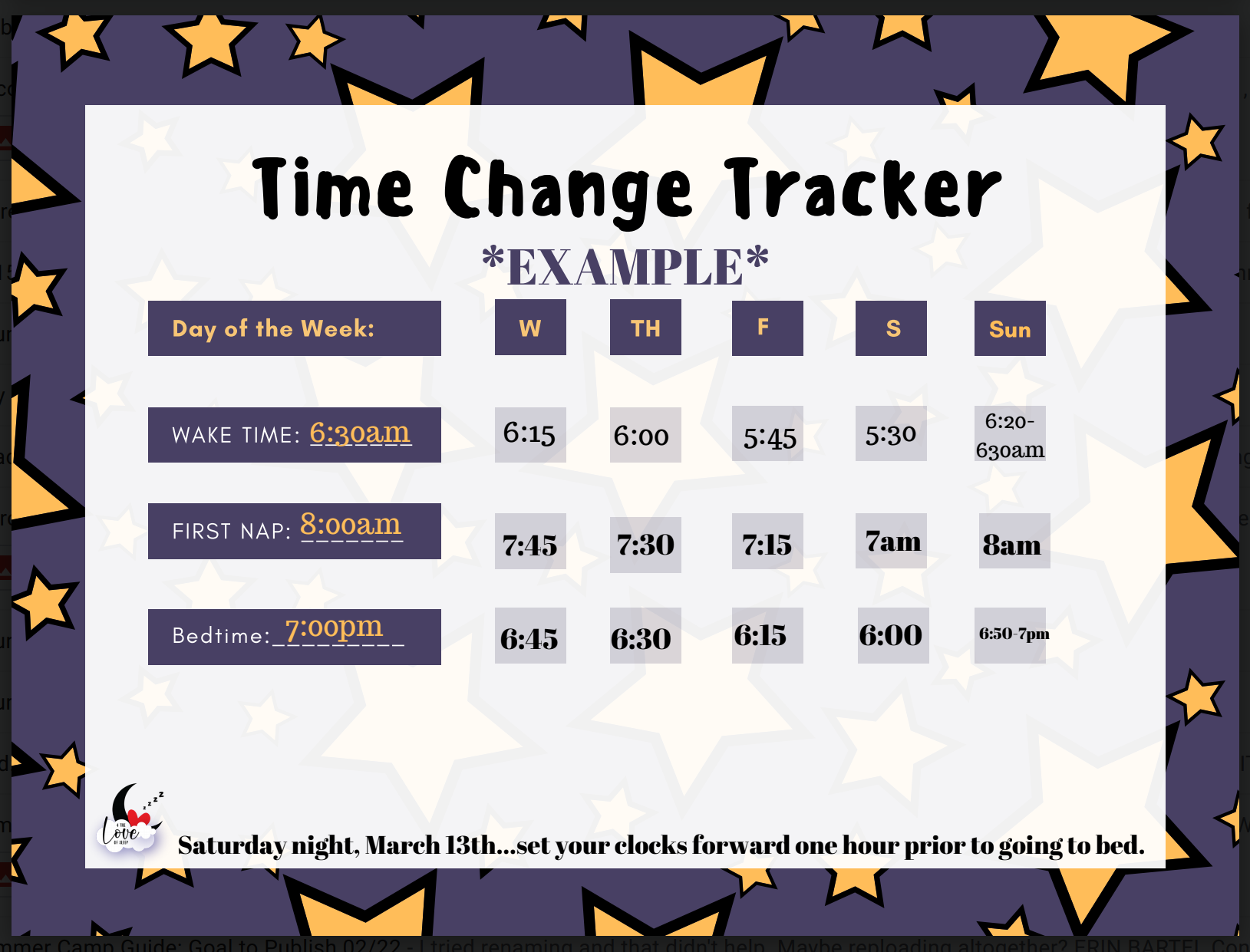
Just as your family routine starts to adjust from daylight savings time ending, it’s already time to start the new year of daylight savings time. I don’t know about you guys, but when my girls were little, I would always get a bit anxious when a time change was coming. Changing up your child’s routine c
an be stressful and seem like an exhausting task (before it even starts). I’m here to tell you that it’s going to be OKAY! Here are 5 tips and tricks to make the transition to daylight savings time a little brighter.
1. Adjust your clocks slowly
Four days before daylight savings starts, start adjusting your kitchen, child’s bedroom clocks, and bedtime clocks forward by 15 minutes.
March 10th: 6 pm will now turn to 6:15 pm
March 11th: 6 pm will now turn to 6:30 pm
March 12th: 6 pm will now turn to 6:45 pm
March 13th: 6 pm will now turn to 7 pm

These gradual changes will help your child’s internal clock to start adjusting to losing that hour of sleep. Your child might not seem as tired come nighttime, but with these small adjustments we will get their bodies back on track.
2. Set the mood
Your child’s body releases melatonin when exposed to darkness. Melatonin is a hormone that is secreted within our brains that helps to regulate our body’s natural sleep-wake cycles. One way that we can help our children release more natural melatonin is by setting the mood within our home. It might be light outside, but it doesn’t have to be light inside. Close the blinds/curtains a little earlier throughout your house and purchase blackout curtains for your child’s room. These changes will allow their bodies to internally start to adjust no matter what it looks like outside.
3. Say No to Electronics
Shutting off electronics 3 hours before bedtime can allow for their eyes and brains to prepare for the night. Studies have shown that even their small electronic devices radiate light, that in return, can tease their minds into thinking that its waketime vs. nighttime. Instead, encourage them to read books, do puzzles, and build forts.

4. Get outside and play
Take advantage of the extra sunlight. Go for a walk throughout the day or before dinner, spend an additional 15 minutes at the park, plan at least one activity each day that is outside. Soaking in these extra rays of sunshine can allow for their bodies to quickly adjust their circadian rhythms (sleep-wake cycles). For toddlers and younger, it is essential to keep high energy activities before dinner. Sometimes if we pick higher energy activities after dinner, it can promote wake time (2nd wind) and prolong bedtime.
5. Consistency with a sprinkle of GRACE
No matter what works for your family, be consistent and stick to the same bedtime routine. No matter if their bedtime routine starts at 7 pm or 8 pm, the more consistent you’re with the routine itself, the more natural bedtime will be. On the long days, the days that feel like they’re never-ending…give yourself a little GRACE.
Enjoy the extra sunshine because when fall comes, we are back to darkness!


















